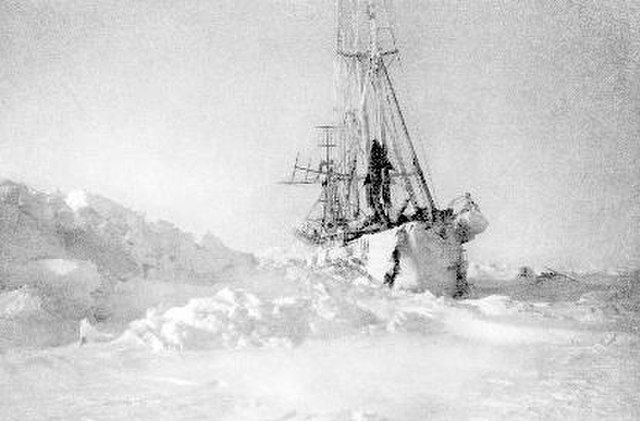Robert Edwin Peary Sr. was an American explorer and officer in the United States Navy who made several expeditions to the Arctic in the late 19th and early 20th centuries. He was long credited as being the discoverer of the geographic North Pole in April 1909, having led the first expedition to have claimed this achievement, although it is now considered unlikely that he actually reached the Pole.
At Cape Sheridan on Ellesmere Island, 1909
Peary c. 1900
Matthew Henson, Peary's assistant, in 1910
Peary in civilian clothing
The North Pole, also known as the Geographic North Pole, Terrestrial North Pole or 90th Parallel North, is the point in the Northern Hemisphere where the Earth's axis of rotation meets its surface. It is called the True North Pole to distinguish from the Magnetic North Pole.
Temporary research station of German-Swiss expedition on the sea ice at the Geographic North Pole. Drillings at the landing site at 90°N showed an average ice thickness of 2.5 metres on April 16, 1990
This pressure ridge at the North Pole is about 1 km long, formed between two ice floes of multi-year ice.
Nansen's ship Fram in the Arctic ice
Peary's sledge party at what they claimed was the North Pole, 1909. From left: Ooqueah, Ootah, Henson, Egingwah, and Seeglo.








